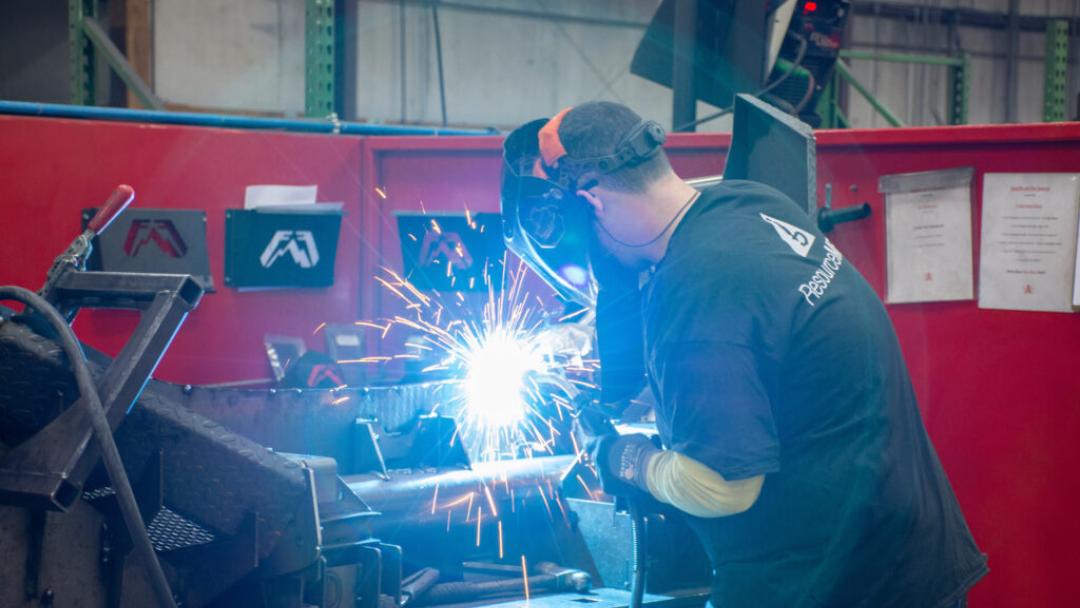A Warehouse Safety Checklist For a Safer Warehouse
Safety is essential to warehouse productivity and efficiency. By following a comprehensive safety checklist, you can ensure your warehouse manager has full oversight of equipment maintenance, employee training, emergency protocols, and more.
Read on as we look at the critical importance of warehouse safety, offer a checklist for your organization to follow, and review strategies to boost employee well-being and operational efficiency.
Why warehouse safety matters
Warehouse environments are inherently risky: The Occupational Safety and Health Administration (OSHA) reports that the rate of warehouse injury and illness reached 5.5 per 100 employees in 2021—more than double the rate across all industries. Workplace accidents and injuries not only disrupt workflow; they also severely can affect morale and, ultimately, your bottom line.
What’s more, organizational leaders need to remember that warehouse safety isn’t just a box to check, it is the foundation of a thriving operation. Beyond compliance with OSHA’s warehouse safety guidelines, warehouse safety requires prioritizing your team’s well-being and fostering an environment of trust and productivity. By proactively emphasizing safety in your warehouse, you not only protect assets but also invest in your most valuable resource: your people.
Key challenges in fostering a secure warehouse environment
According to an audit report from OSHA, the top three serious warehouse injuries from January 2015 through May 2022, as reported by employers, included:
- Fractures.
- Amputations.
- Non-specified injuries (i.e., soreness, pain, or hurt).
Moreover, these three serious injury types accounted for 66% of all warehouse injuries reported. Considering the risky nature of warehouse environments, managers should be well aware of the importance of fostering a safe workplace. However, there are a few common challenges warehouse operators face in the process:
- Compliance complexities: Leaders may find it difficult to follow safety regulations while ensuring adherence across all facets of warehouse operations.
- Resource allocation: It’s critical to balance safety investments with operational needs. However, this can be complicated when facing budget, time, or resourcing constraints.
- Employee engagement: As warehouse managers introduce improved safety protocols, it’s essential to instill a safety-first mindset to overcome resistance to change.
- Technology integration: While safety technologies are increasingly available, integrating them into existing warehouse systems without disrupting operations can be challenging.
Warehouse safety checklist: What to check during a warehouse inspection
The Ansell Inteliforz 2023 Workplace Safety Report reveals that 94% of employees say that it’s very important that their employer prioritizes physical safety in the workplace, and this is especially true in warehousing. With this in mind, warehouse inspections play a pivotal role in identifying potential hazards, ensuring compliance, and maintaining a secure working environment.
When promoting warehouse safety, be sure to inspect and verify the following:
- A clear and unobstructed layout in aisles and open areas.
- Damage at your building and location (e.g., windows, floors, ceilings, and walls).
- Racks are in a sound and intact state.
- Correct usage of elevators and hoists for material lifting.
- Covers or guardrails in place for fall protection.
- Effective pest control measures.
- Functional overhead lighting fixtures.
- Adequate drainage.
- Proper stacking of loose or unboxed materials.
- Hygiene and cleanliness.
- Derail and bumper blocks on spur railroad tracks.
- Proper maintenance of fire extinguishers.
- Correct and clear markings on fire exits.
- Personal protective equipment (PPE) used for handling chemicals.
- Appropriate labeling of hazardous material containers.
- Functional and closed dock doors when not in use.
- Adequate ventilation.
- Equipment operates properly.
- Established employee training and evaluation procedures
While this list may seem overwhelming at first, a warehouse inspection and safety checklist are your organization’s best defense against accidents, injuries, and disrupted operations. Consider the following steps to ensure a thorough warehouse review:
- Assess your warehouse and pinpoint specific areas of improvement.
- Compare your protocols against the top safety standards outlined by OSHA and international regulatory bodies for warehouse operations; identifying areas for compliance enhancement.
- Develop proactive strategies for achieving warehouse safety and addressing necessary changes.
- Go above and beyond minimum safety requirements to protect your team.
4 strategies to boost warehouse safety and productivity
In addition to using a warehouse safety checklist, you should use these four strategies to help improve operational efficiency:
1. Introduce regular training programs.
This includes updating safety protocols to align with industry best practices to not only reduce accidents and injuries, but to also ensure team members are prepared to handle emergencies.
Warehouse managers should implement training programs and conduct regular safety workshops that cover updated protocols, emergency procedures, and equipment handling. Reinforce learning through simulations, demonstrations, or drills to provide more practical experience. Finally, be sure to involve your employees in safety discussions, This will encourage their active participation and commitment to organizational safety measures.
2. Implement robust safety protocols
All warehouses should have safety manuals that are easy to read and readily available to all employees. Designate team members to conduct routine safety audits and encourage all team members to report potential risks. This can help promote a safer warehouse environment.
3. Invest in high-quality equipment and maintenance
Well-maintained equipment is key to minimizing breakdowns and mitigating accidents caused by faulty machinery. Managers should schedule regular equipment inspections to detect signs of wear, damage, or malfunctions early on, and promptly address identified issues..
4. Promote a culture of safety
Acknowledge and reward risk-averse behavior to reinforce adherence to proper protocols. Moreover, consistently encourage open communication about safety concerns to foster an environment where employees feel empowered to voice their observations or suggestions.
Fostering a workforce that empowers warehouse safety
Warehouse safety is the bedrock of a productive and secure work environment. Warehouse managers play an essential role in establishing safety by prioritizing adequate protective protocols and fostering a safety-centric culture.
However, it’s important to note that a capable workforce also has a role in maintaining safety standards. Employbridge can be a valuable partner by offering workforce solutions that cater to your unique business demands. Employbridge gives your warehouse access to a diverse talent pool that enables productivity, financial flexibility, and increased revenue streams.
Ready to build a team with the skills and expertise needed to promote a secure working environment in the long run? Contact us to learn more about how we can support your warehouse.



